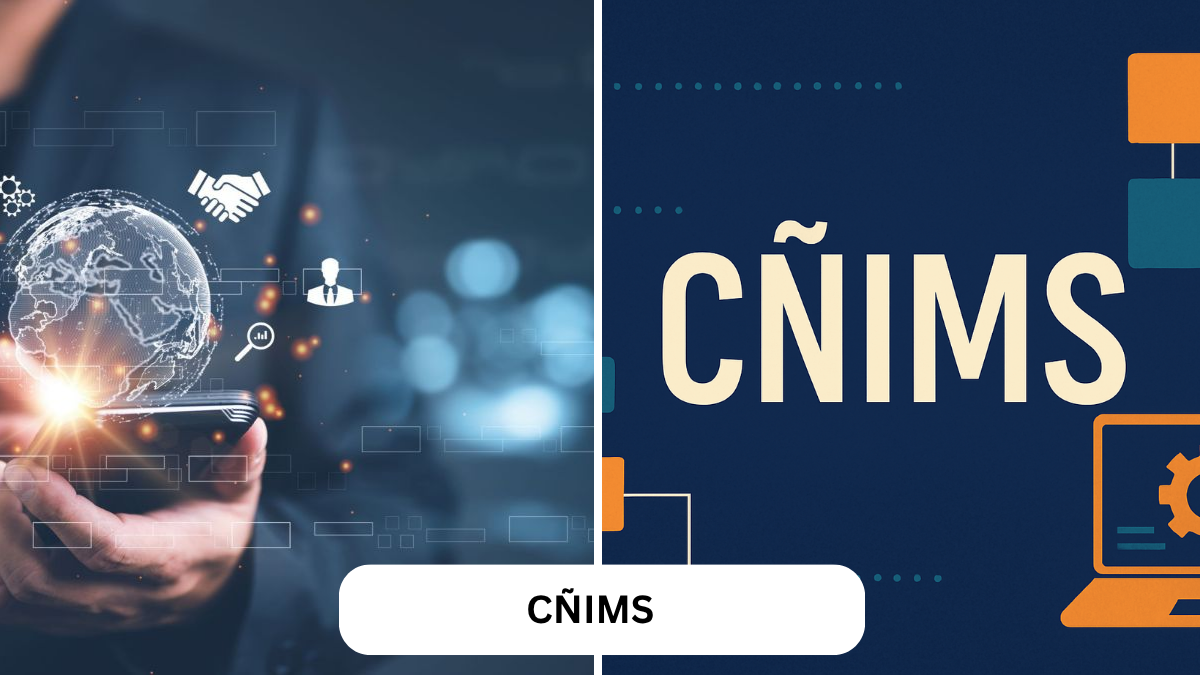The Emergence and Purpose of CÑIMS
CÑIMS, a term increasingly recognized in educational and institutional circles, represents a major shift in the way modern institutions manage information, streamline processes, and enhance communication. As educational and administrative systems become more digitalized, CÑIMS serves as an innovative platform that integrates technology with management. The concept behind CÑIMS is rooted in efficiency, transparency, and connectivity, making it an indispensable tool in the current age of information and data-driven decision-making.
CÑIMS stands for Centralized Networked Information Management System, a comprehensive solution developed to handle the complexities of data management in schools, colleges, universities, and other organizations. In a world where information is a key asset, CÑIMS simplifies how institutions collect, store, analyze, and use data. It eliminates the inefficiencies of manual record-keeping and provides a unified platform where everything—from academic performance to human resources—can be tracked in real-time.
This digital transformation has made CÑIMS a cornerstone in advancing education and governance, ensuring that institutions operate smoothly while fostering accountability and productivity.
The Vision Behind CÑIMS
The primary vision of CÑIMS is to create an ecosystem where information flows seamlessly between departments, administrators, teachers, students, and stakeholders. It aims to replace outdated administrative systems with a centralized and intelligent platform capable of supporting modern institutional demands.
The idea behind CÑIMS was to develop a system that would not only automate operations but also provide valuable insights for better decision-making. Its creators understood that institutions generate vast amounts of data daily—from student attendance and assessments to payroll management and resource allocation. Managing this information effectively was becoming a growing challenge, and CÑIMS emerged as the answer to this complex problem.
At its heart, CÑIMS promotes accessibility and accountability. It enables institutions to maintain transparency by ensuring that data is accurate, updated, and easily accessible to authorized personnel. This vision aligns with the broader goal of building digital ecosystems that support growth, innovation, and collaboration in the education sector.
Key Features and Functionalities of CÑIMS
CÑIMS is more than just a database—it is a complete management solution that encompasses every aspect of institutional operations. Its core functions include data storage, real-time analytics, communication tools, and automated workflows.
Through its user-friendly interface, administrators can monitor academic and financial activities, track progress, and generate reports effortlessly. Teachers can update grades, communicate with students, and manage classroom activities, while students can access their academic records, attendance data, and schedules from anywhere.
The system also supports customizable dashboards, allowing different departments to view data relevant to their functions. This ensures that information remains organized and easily interpretable. Moreover, CÑIMS employs advanced security protocols, ensuring that all sensitive information—such as financial data or student records—remains protected from unauthorized access.
In essence, CÑIMS integrates the administrative, academic, and operational components of an institution into one cohesive platform, simplifying management and improving overall efficiency.
CÑIMS and the Role of Technology in Modern Education
The introduction of CÑIMS has coincided with the global movement toward digital education and smart institutions. In an era where technology drives almost every aspect of life, education systems are evolving rapidly to meet the expectations of digital-native learners and technologically adept administrators.
CÑIMS embodies this transformation by making institutional management smarter and more data-oriented. It leverages technologies such as cloud computing, artificial intelligence, and data analytics to ensure that educational institutions can adapt to the dynamic needs of students and educators alike.
For example, through data analytics, CÑIMS can identify performance trends, predict outcomes, and suggest improvements. This empowers educators to make informed decisions about teaching strategies and student engagement. Meanwhile, cloud-based access ensures that all data is available remotely, enabling flexibility and continuity in education, especially in times when physical access is limited.
By integrating technology into management, CÑIMS ensures that educational institutions remain competitive, transparent, and efficient in an increasingly digital world.
The Advantages of Implementing CÑIMS
Institutions that adopt CÑIMS experience a range of benefits that extend beyond efficiency. One of its most significant advantages is improved communication. The platform creates a digital bridge between administrators, teachers, students, and parents, allowing seamless information exchange.
Additionally, CÑIMS enhances accountability through automated reporting and data tracking. Because all information is centralized and easily auditable, institutions can ensure compliance with regulations and maintain transparency in their operations.
Another major benefit lies in time management. Tasks that previously required hours—such as data entry, report generation, or attendance tracking—can now be completed in minutes. This allows administrators and educators to focus more on improving academic quality rather than dealing with paperwork.
Financial management also becomes more streamlined under CÑIMS. From budgeting to fee tracking, every financial transaction can be recorded and monitored in real time, reducing the risk of errors and fraud.
Overall, CÑIMS offers a holistic solution that transforms how institutions operate, enhancing both administrative productivity and educational outcomes.
The Role of CÑIMS in Institutional Development
CÑIMS plays a critical role in helping institutions grow sustainably. By organizing information and promoting data-driven decisions, it empowers leaders to allocate resources more effectively, identify areas for improvement, and enhance institutional performance.
For educational institutions, CÑIMS supports student development by tracking progress and enabling personalized learning experiences. It provides insights into attendance patterns, grades, and behavior, allowing educators to offer timely support to struggling students.
For administrators, CÑIMS acts as a strategic tool that supports long-term planning. Data collected over time can reveal valuable trends that inform policies and help institutions stay ahead of challenges. By aligning goals with measurable outcomes, CÑIMS fosters a culture of continuous improvement.
Challenges and Adaptation of CÑIMS
Despite its many benefits, implementing CÑIMS is not without challenges. Institutions often face obstacles such as lack of technical expertise, resistance to change, or limited infrastructure. However, these challenges are temporary and can be overcome through proper training and gradual integration.
CÑIMS has been designed to be scalable and adaptable, meaning it can fit institutions of varying sizes and technical capacities. Its modular structure allows organizations to start with basic functions and expand as they grow. This flexibility has made it accessible to both large universities and smaller educational centers.
Moreover, as digital literacy increases among educators and administrators, the adaptation process becomes smoother. Continuous training programs and user support further ensure that CÑIMS can be fully integrated into institutional frameworks without disrupting existing workflows.
CÑIMS and the Future of Digital Governance
Beyond education, CÑIMS has the potential to play a vital role in digital governance and organizational management across different sectors. Governments and large organizations can use similar systems to manage data, improve transparency, and ensure accountability in public service delivery.
The scalability of CÑIMS allows it to be customized for various applications—from municipal management and healthcare systems to private enterprise administration. Its strength lies in its ability to bring structure and clarity to complex data networks.
In the future, CÑIMS is expected to evolve further with advancements in artificial intelligence, automation, and blockchain technology. These innovations will make information management even more secure, efficient, and intelligent.
The Global Impact and Recognition of CÑIMS
CÑIMS is gradually gaining recognition worldwide as an essential tool for modern management. Institutions that have implemented it report significant improvements in efficiency, transparency, and communication.
Its impact is particularly evident in developing regions where digital transformation is still in progress. By simplifying information systems and reducing administrative burdens, CÑIMS helps these institutions bridge the gap between traditional management and modern governance.
Globally, the model of CÑIMS represents a blueprint for how digital infrastructure can empower education and administration. Its growing adoption is a testament to its effectiveness and long-term value in promoting organized, transparent, and data-driven management systems.
The Lasting Legacy of CÑIMS
CÑIMS stands as a symbol of progress in the digital era. Its influence extends beyond technology—it represents a shift in mindset toward smarter, more efficient, and transparent management. By redefining how information is handled, it enables institutions to focus on their core mission: providing quality education and service.
The success of CÑIMS is rooted in its ability to adapt to evolving needs while maintaining simplicity and accessibility. It proves that technology, when thoughtfully applied, can make complex systems manageable and equitable.
As institutions continue to embrace digital transformation, CÑIMS will remain a guiding force in building smarter, more connected, and more efficient organizations. Its legacy is one of empowerment, innovation, and commitment to progress—values that will continue to shape the future of education and governance worldwide.
FAQs
1. What is CÑIMS?
CÑIMS stands for Centralized Networked Information Management System, a digital platform designed to manage institutional data and streamline administrative operations efficiently.
2. What are the main benefits of using CÑIMS?
CÑIMS improves efficiency, transparency, and communication within institutions by centralizing data and automating key processes.
3. How does CÑIMS support educational institutions?
It helps schools and universities manage student records, attendance, academic performance, and administrative functions through a unified platform.
4. Is CÑIMS adaptable for non-educational organizations?
Yes, CÑIMS can be customized for various sectors, including government agencies, healthcare systems, and private companies, to manage complex data systems effectively.
5. What is the future of CÑIMS in digital transformation?
CÑIMS is expected to play a crucial role in the future of digital governance, incorporating emerging technologies like AI and blockchain to enhance security and intelligence in data management.



